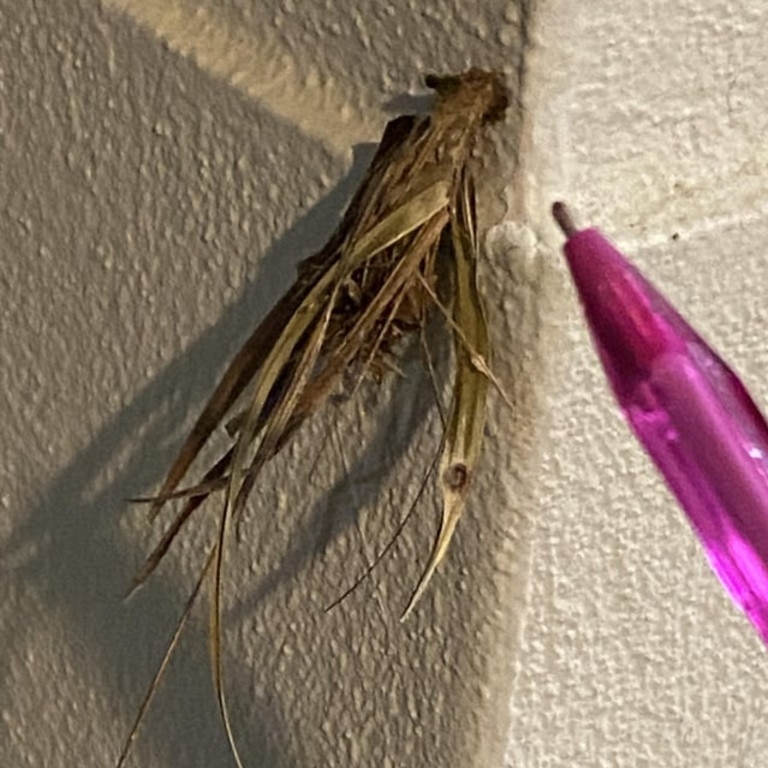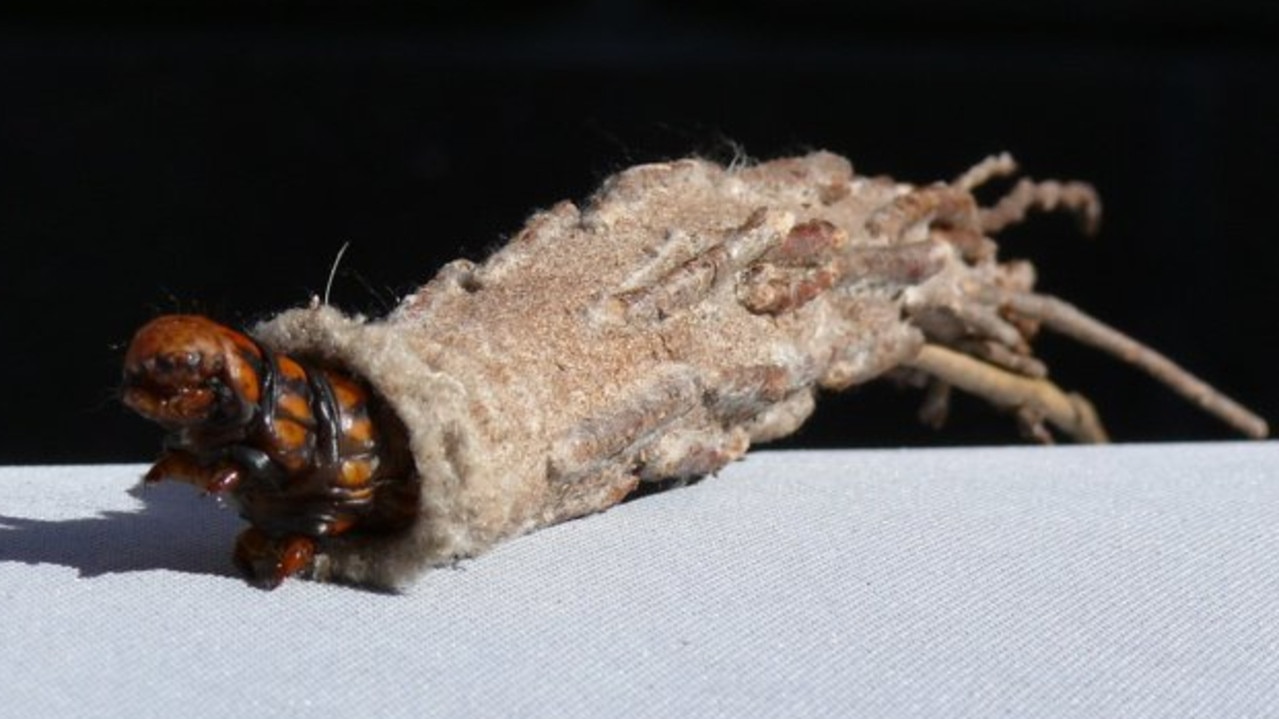Case moth: Aussie freaked out by creepy ‘alien’ creature hanging from Gold Coast home
An Aussie has been left “freaked out” by a creepy “alien-looking” discovery attached to the wall of their Gold Coast home.
An Aussie has been left “freaked out” by a “alien-looking” discovery attached to the wall of their Gold Coast home, before the creepy creature was identified.
Posting to Reddit’s Gold Coast thread, an Aussie user said they discovered the “alien thing” outside their back door and initially thought it was a clump of leaves or piece of bark.
But, upon closer inspection, they were horrified to see the creature move.

“Just seen this alien thing outside my back door, it moves so it’s alive,” they wrote.
“Pen has been added for scale. Google came up with a dehydrated katydid and it looks nothing like that. Please help identify and should I burn my house down?
“I was freaked out when I saw its head. I thought it may attach but it moves very slowly.”
The post attracted plenty of replies from Aussies who had no idea what the strange animal was.
“Oh lord, I have one at my house too and I have been wondering what the actual f***k it was. Mine just looks like an innocent piece of bark until you see it move, it’s horrific,” one person wrote
“It’s the thing outta Alien vs. Predator,” said another.
“Time to move out,” added a third.

Eventually, the creature was identified as a case moth caterpillar, which are found across most of Australia’s east coast.
The insect constructs its own “mobile home” — its case — and spends most of its life as a caterpillar.
This animal’s case could be seen in the picture, appearing to be almost identical to a pile of twigs or bark, because that is effectively what it is. Inside, the caterpillar can be found tucked away.
“The caterpillars who make their own mobile home are often seen attached to fences and walls in urban settings,” the Australian Museum says of the animal.
“Case moths, bag moths or bagworms are names given to a group of moths whose caterpillars make mobile homes from silk, usually attaching plant material, detritus or sand grains to the outside. The Saunders‘ case moth first attaches leaves then short twigs arranged lengthwise.
“Case moths spend most of their lives as caterpillars, the larval stage, which may last for up to one or two years in some species. Once constructed, the female caterpillars never leave their cases.”
The case has two openings — a larger “mouth” which the insect pokes its head out of to feed and move, and a smaller hole at the opposite end where it excretes droppings.
Case moths, which can be up to 15 centimetres long, are not considered dangerous to humans. Some species eat plants, while others eat lichens or scavenge for food in ants nests.






